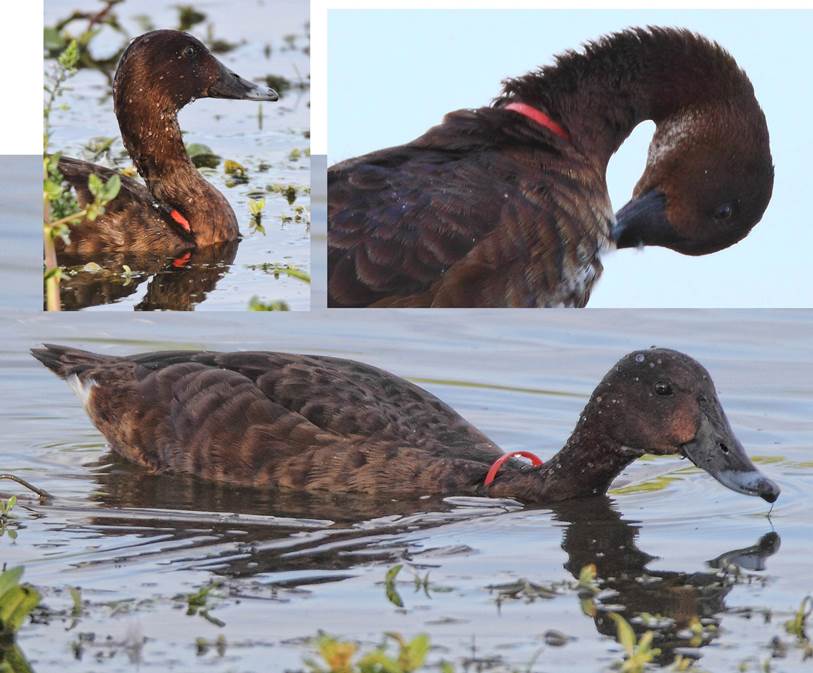|
Geoffrey the red (apparently plastic) collar
looks to me very much like the plastic ring that goes on juice bottle
tops, that breaks off the lid when it is first opened. When I use those bottles
I always cut these rings (so that even if an animal get entangled, they can
quickly pull them off. Even though I wouldn't dispose of them in a place like
that, we all should do that so that in several thousand years when humans are
extinct, or a few hundred years when human civilisation doesn't exist, these
things won't still be killing wildlife.
The
amount of plastic debris around places like that is really appalling. The best
that can be said is it appears not to be tight, so the bird may be able to live
with it and I don't think they eat big things that would stop it feeding.
Philip
Among various points of interest at Kelly Swamp this morning
was a female Hardhead with a red (apparently plastic) collar. This seemed
too inconspicuous to have been used as a tag for field identification. It
might have been a tether for a tame hardhead, but it is some time since I’ve
seen a duck on a leash being led along the dog path. The possibility of
some kind of accidental snaring remains. I take this opportunity to mention the
confusion suggested by the English names of this species. The CSIRO book
and HANZAB both give ‘widgeon’ as one English name. That name was
appropriately discarded because ‘wigeon’ was used for northern hemisphere
species in the genus Anas, and therefore not closely related. The
Hardhead is in the genus Aythya and might therefore be regarded as a
‘pochard’ (in northern hemisphere terms). Indeed, ‘Australian Pochard’ is
one of the names given in HBW, although ‘pochard’ is not mentioned in the 2
first-mentioned references. I would guess that ‘pochard’ was a later
classification-based suggestion, not known to Australian shooters who were out
bagging ‘hardheads’ - or ‘widgeons’. Neither ‘pochard’ nor ‘widgeon’ is
mentioned in the Ian Fraser book.

|

